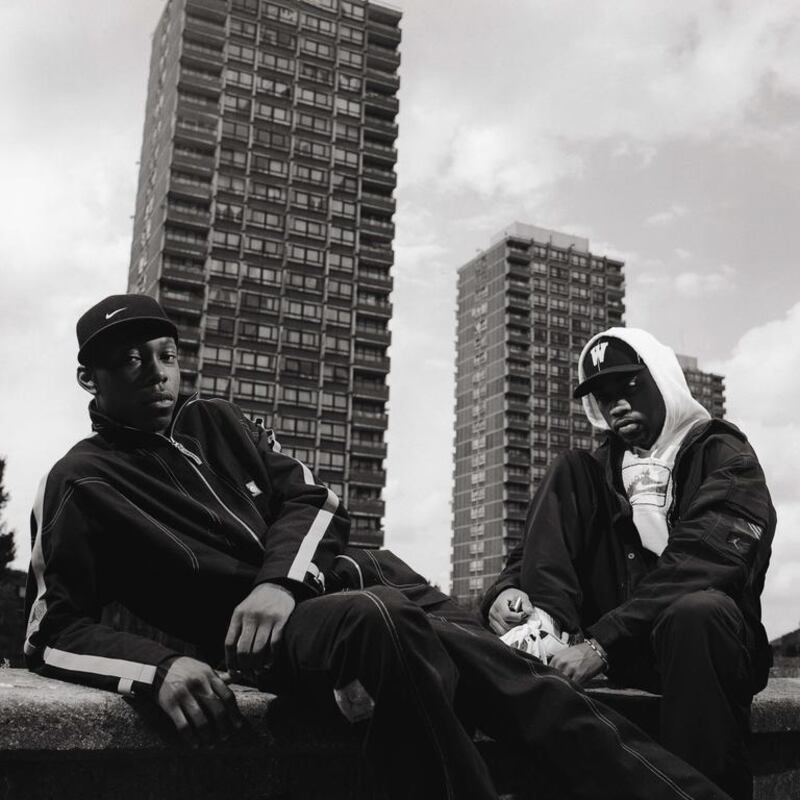When north London grime MC Skepta, also known as Joseph Junior Adenuga, stepped onto the stage to accept the 2016 Mercury Prize last month for his album Konnichiwa, he looked utterly dazed. As the album's anthem Shutdown made no bones about pointing out – he had reached a level of national stardom with "no label, no A list songs", just a born-again determination to remain independent and make the music he passionately believed in: specifically, the frenetic millennial sound of London council estates known as grime. Faster than American rap, it's a sound more in thrall to the British-Caribbean inheritance of Jamaican dance-hall vocals and "riddim" culture, and British electronic club sounds such as UK garage and jungle.
Skepta’s victory was the culmination of a remarkable redemption story for a style of music repeatedly dismissed, since its emergence in the early 2000s, as too esoteric and too sonically ferocious to succeed in the mainstream. Against apparently insurmountable odds, grime’s teenage cast of characters sent out a signal from the pirate radio aerials and crumbling tower blocks of London’s poorest boroughs that would eventually resonate in the way that rap music had done in America, decades earlier. By 2016, 13 years after grime’s first wave of DIY stars shocked the pop charts, the likes of Dizzee Rascal, Wiley and Skepta have become household names in the United Kingdom – while a new generation of artists, such as Stormzy and Novelist, are following their heroes straight into mainstream stardom; and this time, picking up plaudits overseas, too.
Grime had certainly been through the doldrums, entirely written off for most of the late 2000s. When I first interviewed Skepta in 2007 for a fanzine called Woofah, the genre looked to be dwindling. Some first-wave talents who had been signed in the brief industry gold rush after the success of Dizzee Rascal's debut, Boy in Da Corner, had seen their major label deals flop (Shystie, Durrty Goodz). The press had lost interest, and London's Metropolitan police were shutting down what few grime nights remained in London, citing concern about possible crowd trouble that was never borne out by reality. Even the underground scene was struggling. The once-thriving DVD publishing cottage industry was dying thanks to YouTube, and vinyl production had dwindled to almost nothing (in the early days, MCs like Wiley would sell thousands of brand new records out of the boot of a car). Much like punk in the late 1970s, a youthful and explosive new sound was being written off as a short-lived fad. Musicians on the fringes, many of them just teenagers, gave up the hobby and got real jobs, or some DJs turned their attention to more established dance genres such as house, where the existing infrastructure meant they could actually make a living.
And yet, as we stood outside a small London club those nine years ago, on a warm spring night after a show, Skepta remained almost bizarrely optimistic. "People are running away from grime thinking it's not working," he told me. "But they're sell-outs man. That's why Boy Better Know [a grime collective and record label] is easily going to be the best thing in grime."
That same year, 2007, I interviewed the “godfather of grime” Wiley, the erratic, prolific MC and producer – and the man who had mentored many younger artists to stardom, including Dizzee, Tinchy Stryder and Skepta. Why, I asked, was the music’s initial promise – its youthful, rebellious energy – not translating into successful chart crossovers? He took a long view: “because it takes 10, 15 years to build a scene.”
Vindication took its sweet time, but they were both proved right. Skepta’s label and crew Boy Better Know, often just BBK, was formed by his younger brother and fellow MC Jamie “JME” Adenuga a decade ago, and still operates out of his parents’ modest little house in Palmers Green, north London. Boy Better Know embodies the independent spirit of grime that saw Skepta triumph at the Mercury Prize – it is an independent label and merchandising brand, with JME doing virtually everything, from designing sleeve artwork to liaising with CD manufacturing and distribution.
The credibility that this has brought Boy Better Know – and the rest of grime by association – has begun to expand beyond the shores of the UK in the past 18 months. The tastemakers to the world – American rap megastars have been queuing up for a bit of the UK’s reflected underground glory. Kanye West brought the entire UK grime scene on stage when performing at last year’s BRIT awards (leading to much debate about why the British music industry had failed to do so themselves), while Drake has become a one-man grime evangelist movement, collaborating with Skepta. In February, Drake even got a “BBK” tattoo and semi-officially joined BBK.
While it may not be true that grime is a truly global sound in the way that hip-hop has been for two decades, if we are to follow the US rap analogy and an evolutionary timeline to go with it, grime should be about where hip-hop was in the early 90s: consolidation achieved, infrastructure established, white suburban teenagers completely on-board with a predominantly black inner-city sound that is now ready to look out to the world.
It may not be surprising that there is a burgeoning Japanese grime scene, especially in Tokyo. When Skepta launched Konnichiwa in May, he did so in four British cities, but also, a few days earlier, with a launch event in the Japanese capital – joined onstage by Japanese MCs. One of those MCs, Pakin, told Vice magazine this year that he had discovered grime via Dizzee Rascal, a decade earlier, and continued to follow it closely online before picking up the mic himself: "I was blown away by the UK sound – the unique flow of the rappers and the rough beats and bass. I had no idea what the lyrics meant, but the raw energy really appealed to me."
For a style of music shot through with local London slang and accents and delivered at double-time speed, compared to American rappers, the possibility of getting lost in translation has been a problem in the past. When grime's greatest success (and export) Dizzee Rascal toured the United States for the first time in 2004 to promote Boy in Da Corner, he appeared on Los Angeles's famous rap station Power 106, with DJ Felli Fel. After a typically energetic live performance, while chatting with Fel on air, there came a telling obstacle: the American DJ could literally not understand the young Brit's accent. He asked Dizzee to repeat the name of his album no fewer than three times and eventually Dizzee patiently just spelled it out, letter by letter: "B-O-Y…" It's not the only time the US and the UK have felt like two countries divided by a common language.
Maybe the international flows of web 2.0-era pop music make this less of a problem than it used to be. This year saw US music festival SXSW’s host its first official grime showcase, and the response to grime’s new generation – the likes of Stormzy, Section Boyz and Elf Kid – from the US industry was reportedly huge. One of those young MCs on the bill, south London’s Elf Kid, was featured in a short documentary about SXSW, and was asked a crucial question: Would Americans be able understand the grime accent, slang or lyrics? He thought about it for a moment. “No, but I don’t think they have to,” Elf Kid answered, and dragged in the US’s hottest – famously undecipherable – new rap talent for comparison. “We don’t understand what Young Thug says either, but we still vibe.”
Dan Hancox is a regular contributor to The Review.





